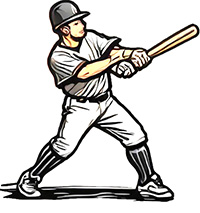The Soda Pop Test is a manual dexterity test or coordination test of fine motor abilities, which involves turning over cans.
test purpose: to measure manual dexterity and hand-eye coordination
equipment required: stopwatch, three full 12 oz. (355ml) soda pop cans, a cardboard platform 32 in. (81.28 cm) in height and 5 in. (12.7 cm) wide. Six circles, 3.25 in. (8.26 cm) in diameter, are drawn in a straight line centered on the cardboard 1.5 in. (3.81 cm) apart.
pre-test: Explain the test procedures to the subject. Prepare forms and record basic information such as age, height, body weight, gender, test conditions. See more details of pre-test procedures.
procedure: The soda pop cans are placed in every other circle starting from the side of the hand being tested. The participant, seated at the table, begins the test by placing the hand “thumb up,” with the elbow joint bent at about 100-120°, grasping the first can with the hand being tested. On the signal “Go,” the stopwatch is started and the participant begins. Each can is then turned upside down into the adjacent empty circle within the drawn line. The participant then returns to the first can turned, replaces it in the original position and proceeds with the other two cans. This whole process is repeated twice.
scoring: The time of each test is recorded to the nearest tenth of a second. The participant is allowed two practice trials, then two actual trails. The best score is recorded.
advantages: the soda pop cans are easily obtained, though the cardboard base needs to be made.
target population: this test was designed specifically for the elderly population.
comments: a soda pop can is the US description of a can of drink that may be called a soft drink elsewhere, such as a can of coke.
The Test in Action
- This test is part of the protocol for the AAHPRED Functional Fitness Test for the Elderly.
Similar Tests
Related Pages
- More about the AAHPRED Functional Fitness Test for the Elderly.
- A discussion about Fitness Testing for the Elderly
- Other coordination tests


 Current Events
Current Events